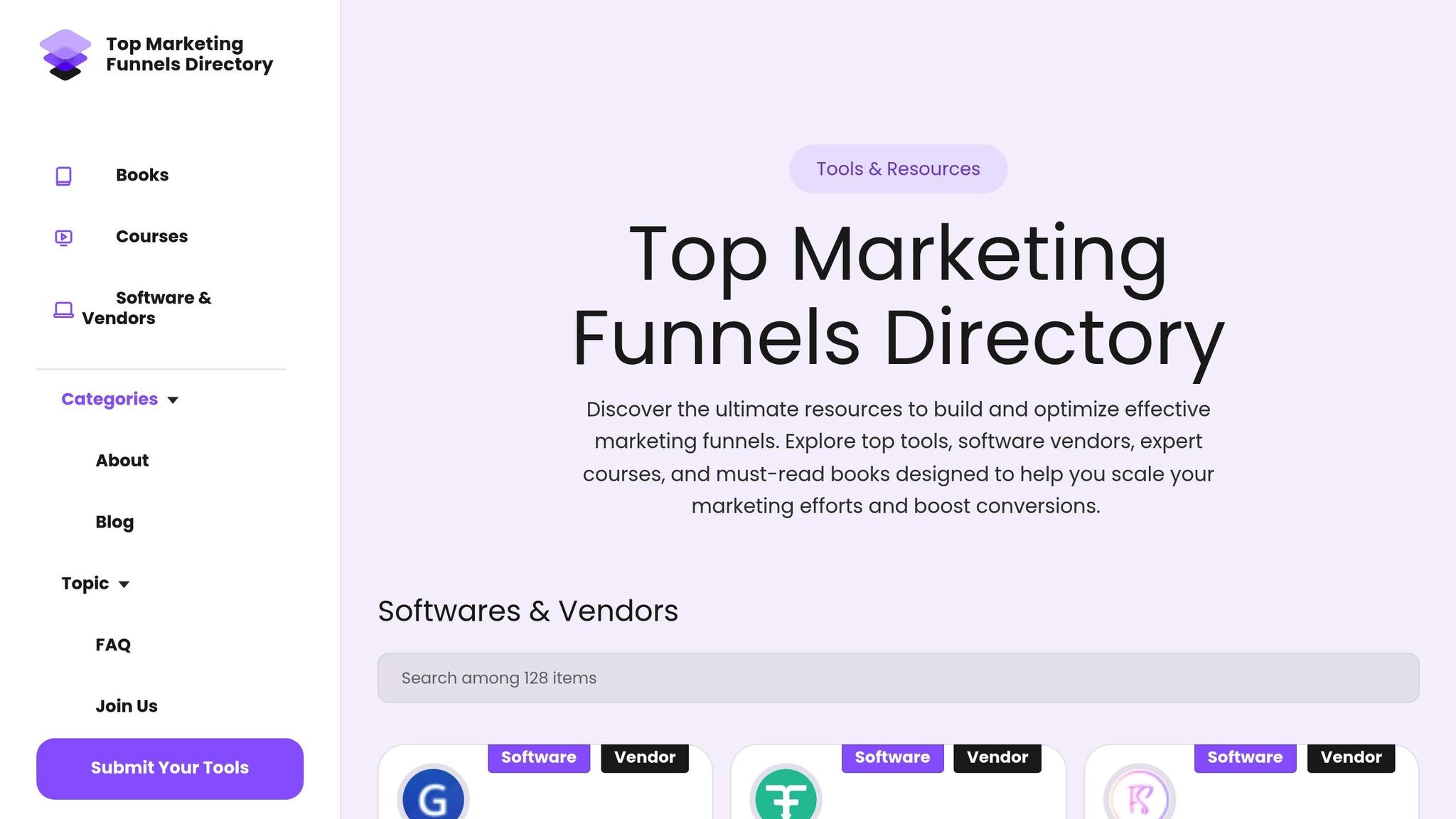Lead scoring helps B2B companies identify the best prospects by assigning points based on characteristics and behaviors. Companies using lead scoring report up to 77% higher ROI on lead generation. However, challenges like outdated metrics, poor sales-marketing alignment, and missing real-time data often reduce its effectiveness.
Key Insights:
- Common Problems: Over-reliance on basic metrics, lack of team coordination, and static data lead to inefficiencies.
- 3 Lead Scoring Models:
- Rule-Based: Simple but inflexible. Best for small teams or new users.
- AI-Powered: Predictive but requires historical data. Ideal for data-driven businesses.
- Intent-Based: Focuses on real-time buyer signals. Works well for long sales cycles.
- Improvements: Add behavioral data, use AI, align sales and marketing, and regularly update models.
Advanced Lead Scoring Techniques for B2B Tech Companies
Common Lead Scoring Problems
Lead scoring can be a game-changer for B2B companies, but it’s not without its challenges. The numbers tell a tough story: 98% of marketing-qualified leads (MQLs) never turn into closed deals, and only 35% of salespeople trust their company’s lead scoring system. So, what’s going wrong? Many of these issues boil down to three key problem areas that companies often overlook when building their lead scoring frameworks.
Using Only Basic Metrics
One of the biggest missteps in lead scoring is relying too heavily on demographic and firmographic data while ignoring buyer behavior. Traditional models often award points for things like job titles or company size, but these factors rarely signal genuine purchase intent. For instance, a CEO from a Fortune 500 company might score high based on their profile, but if they’ve shown no interest in your product, the chances of conversion are slim. No wonder only 27% of leads passed from marketing to sales are actually qualified.
The problem gets worse when scoring models fail to consider the timing and context of a lead’s actions. For example, someone who downloaded a few whitepapers months ago might receive the same score as someone actively browsing your pricing page today. This one-size-fits-all approach inflates lead quality on paper but doesn’t reflect reality, making it harder to distinguish between passive interest and active buying intent.
Poor Sales and Marketing Team Coordination
Another major hurdle is the lack of alignment between sales and marketing teams. When these teams aren’t on the same page, they often end up with conflicting definitions of what makes a lead "qualified." Marketing might hand over leads marked as "high-scoring", but sales may find many of them aren’t actually ready to buy. This disconnect creates frustration on both sides and undermines the effectiveness of lead scoring as a tool for collaboration.
The root of the issue often lies in poor communication. Without consistent feedback from sales, marketing teams can’t refine their scoring models based on what actually leads to conversions. Over time, this misalignment results in wasted effort, missed opportunities, and a system that doesn’t deliver on its promise of identifying the best prospects.
Missing Real-Time Data
Timing is everything in sales, and outdated lead scoring models can leave you chasing cold leads while missing hot ones. Many traditional systems rely on static updates - weekly or even monthly - which means they can’t keep up with real-time changes in a prospect’s behavior. In today’s fast-paced B2B landscape, a lead’s interest level can shift dramatically within hours.
For example, if a prospect is actively engaging with your product features or exploring your pricing page, but your scoring model doesn’t capture that activity in real time, you risk losing them to a competitor. Static systems often lead sales teams to prioritize leads that have already cooled off, while overlooking those who are ready to take the next step. Without real-time insights into website behavior, product usage, or engagement patterns, your lead scores can quickly become outdated, costing you conversions when they matter most.
3 Main Lead Scoring Models
To tackle challenges in lead scoring, let's explore three distinct models. Each one takes a unique approach, focusing on different data points and strategies to address common issues.
Rule-Based Lead Scoring
Rule-based lead scoring is built on predefined criteria. It assigns points based on factors like demographics, firmographics, or engagement behaviors. For instance, a C-level executive might earn +20 points, a company with over 500 employees could get +15, and downloading a whitepaper might add +10. This method gives marketing teams full control over the scoring process, making it easy to understand and explain.
But there's a catch. Rule-based scoring relies on static rules, which don’t adjust to changing market dynamics or evolving buyer behaviors. It also fails to account for the timing or context of actions, treating all activities the same. Despite these limitations, 60% of companies still use this model.
AI-Powered Lead Scoring
AI-powered lead scoring takes a smarter approach, leveraging machine learning to analyze historical data and predict which leads are most likely to convert. By studying past conversions, AI identifies the traits and behaviors that signal success. Companies using AI-powered models often report impressive results: a 25% boost in sales productivity, a 15% shorter sales cycle, a 25% increase in conversion rates, and a 30% drop in customer acquisition costs, according to Forrester.
"By using AI-powered lead scoring models, marketers can analyze large amounts of data and make more accurate predictions about which leads are most likely to convert." – Chris Fletcher, Chief Marketing Officer at HubSpot
Real-world success stories back this up. New Relic saw a 30% increase in sales-qualified leads. Samsung improved lead conversion rates by 30% and cut its sales cycle by 25% using Marketo's AI solution. Adobe achieved a 25% rise in conversion rates. The standout feature of AI-powered scoring is its ability to continuously adapt, processing massive amounts of demographic, behavioral, and firmographic data.
Intent-Based Lead Scoring
Intent-based lead scoring takes things further by zeroing in on behavioral and intent signals to gauge a lead’s readiness to buy. It looks at real-time actions like product usage, website activity, and content consumption. It can even use third-party intent data to track broader research behavior. By factoring in timing and context, this model helps identify when a lead is actively considering a purchase.
This approach is especially useful for businesses with long, complex B2B sales cycles, where understanding buyer intent can make or break a deal. It becomes even more powerful when paired with AI, which can analyze intent signals at scale to detect patterns that might otherwise go unnoticed.
| Model Type | Pros | Cons | Best For |
|---|---|---|---|
| Rule-Based | Simple to set up; transparent scoring logic; full control over criteria | Static and inflexible; treats all actions equally; loses accuracy over time | Small teams; straightforward products; companies new to lead scoring |
| AI-Powered | Learns and adapts over time; handles large data sets; more precise predictions | Needs historical data; less transparent; more complex to implement | Data-driven organizations; complex sales cycles; teams seeking automation |
| Intent-Based | Tracks real-time buyer signals; focuses on purchase intent; improves timing of outreach | Requires strong tracking systems; can produce noisy data without filtering; depends on intent data sources | Companies with long sales cycles; high-value purchases; strong digital presence |
These models lay the groundwork for effective lead scoring. Many businesses even combine them into hybrid systems for better results. Up next, we’ll dive into how to build and refine these models to maximize conversions.
How to Build Better Lead Scoring Models
Creating effective lead scoring models takes more than just basic demographic data. It’s about blending various data sources, using the right technology, and fostering collaboration between teams.
Add Behavioral and Intent Data
Traditional lead scoring often overlooks the most telling signals: what potential customers actually do. Behavioral scoring focuses on tracking actions like website visits, content downloads, email interactions, and social media activity. Each action is assigned points based on how much it indicates interest in purchasing.
Purchase intent scoring goes a step further, emphasizing actions that suggest readiness to buy - like visiting pricing pages, requesting demos, or engaging with product-specific content. For example, Gojiberry incorporates behavioral scoring into their ideal customer profile framework. A pricing page visit from a VP of Marketing at a 200-person SaaS company carries significantly more weight than the same action from an intern. They also use negative scoring to filter out unqualified leads. For instance, leads from industries they don’t serve or job titles that rarely convert are assigned negative points.
Here’s how to make this work:
- Identify key actions: Pinpoint behaviors that strongly indicate intent to buy. Collaborate with your sales team to discover which actions typically lead to conversions.
- Prioritize actions by importance: Assign higher scores to behaviors that show stronger intent - like a demo request over a blog download.
- Use score decay: Reduce points over time if a lead becomes inactive, keeping your scoring system current.
- Set clear thresholds: Define how often a lead needs to engage and which signals matter most to separate casual interest from serious intent.
Use AI and Machine Learning
AI can transform lead scoring into a dynamic, predictive tool. By analyzing data with machine learning algorithms, AI identifies which leads are most likely to convert and adapts its predictions over time.
The results are impressive. Companies using AI for lead scoring have reported marketing conversion increases of 9% to 20%, churn rate reductions of 13% to 31%, and time-to-insight improvements of over 85%. For instance, Workforce Software saw a 121% boost in account engagement within six months using the Demandbase platform, which helped them pinpoint buyer intent and focus their efforts.
IBM Consulting also leveraged Demandbase Personalization for their US Open Campaign. Karen Feldman, CMO of IBM Consulting, explained:
"These account insights are invaluable – knowing what our clients are looking for and being able to proactively tailor and personalize their experience is a true win-win for both our clients and IBM."
To implement AI effectively, start by auditing your current lead scoring system to identify gaps. Choose a platform that integrates smoothly with your existing tools, train the AI using historical data, and align it with your sales processes. Regularly monitor its performance and adjust based on sales goals and shifts in buyer behavior.
Get Sales and Marketing Teams Working Together
Even the best lead scoring models can fall short if sales and marketing aren’t aligned. Companies with strong collaboration between these teams report 32% higher revenue growth, are 67% better at closing deals, and achieve 36% higher customer retention rates.
Nico Dato, CMO of Entrata, highlights this issue:
"I think you'd be shocked... I'll go talk to the head of marketing and sales. I'm like, 'Hey, do you work with each other?' They're like, 'No, not really. They provide us MQLs.' I'm like, well, that's part of the issue."
True collaboration starts with shared goals and KPIs. Teams should jointly define the Ideal Customer Profile and hold regular meetings to refine scoring models based on direct feedback. These meetings allow sales to share challenges, enabling marketing to adjust strategies quickly.
Sam Tarantino, former CEO of Grooveshark, and Nico Dato both emphasize that such collaboration can boost engagement by up to 35%. Rasa Urbonaitė, CMO of Breezit, adds:
"Establish very clear common objectives at the beginning of your cooperation. If you don't communicate a lot naturally, you should schedule meetings of your teams ahead of time, during different stages of your project.... It is also not a bad idea to have a platform that allows you to see the progress of each team. I'm thinking tools like Trello or Monday."
Update Models Based on Results
Lead scoring isn’t a one-and-done process. Regularly reviewing conversion rates helps you identify what’s working and what needs improvement.
Start by adjusting score weightings based on performance data; some signals will prove more valuable over time. Refine your Ideal Customer Profile to ensure you’re targeting the right industries and roles. Multi-touch attribution scoring can also provide a more complete picture by crediting all marketing interactions that lead to a conversion, rather than just the final touchpoint.
Establish feedback loops between your scoring system and sales outcomes. Track which leads convert, how long their sales cycles are, and their lifetime value. Use this data to fine-tune your scoring model and align it with your overall funnel strategy.
sbb-itb-a84ebc4
How to Measure Lead Scoring Success
Evaluating your lead scoring system is essential to determine if it’s driving conversions and boosting revenue. Without tracking performance, it’s impossible to know if your scoring model is hitting the mark.
Important Metrics to Track
One of the most critical metrics to monitor is the lead-to-customer conversion rate. The average conversion rate hovers around 2.9%, and this figure provides a baseline to measure how well your scoring system works.
Another key area to focus on is pipeline quality. This involves analyzing the percentage of marketing-qualified leads (MQLs) that transition into sales-qualified leads (SQLs) and their sales cycle duration. Companies with advanced lead generation systems see a 133% increase in revenue, largely because they’ve fine-tuned this process.
You’ll also want to calculate your customer acquisition cost (CAC) to ensure resources are being used effectively. If your return on investment (ROI) isn’t where it should be, it could mean your scoring model is directing sales teams toward less promising leads.
Email engagement metrics are another useful indicator. Typical email open rates range from 15-30%, while click-through rates fall between 2-5% across industries. Leads that consistently outperform these benchmarks often signal stronger intent and better scoring accuracy.
The sales cycle length for different lead score ranges is another important measure. High-scoring leads should ideally have shorter sales cycles. If they don’t, it might be time to adjust your scoring criteria.
These metrics provide the groundwork for actionable improvements, which brings us to the next step: feedback loops.
Setting Up Feedback Loops
To refine your lead scoring system, feedback is essential. Sales teams play a crucial role in this process since they directly interact with leads and know which ones convert - and which don’t.
Weekly sales-marketing reviews are a great way to assess lead quality. During these sessions, sales reps can highlight high-scoring leads that didn’t convert and low-scoring leads that did. This kind of direct input can uncover patterns that automated systems might miss.
Tracking closed-won and closed-lost reasons is another valuable strategy. For high-scoring leads that don’t convert, document why - was it due to budget constraints, timing, authority, or a lack of need? This data helps you determine whether your scoring model accurately identifies buying readiness or just surface-level interest.
Keep an eye on score changes over time. If leads with consistently high scores fail to convert at expected rates, it could signal that your time-based scoring factors need adjustment.
Finally, set up monthly reviews to analyze conversion data and tweak your scoring model. Adjust point values based on recent trends to ensure your scoring stays aligned with performance.
Comparing Against Industry Standards
Benchmarking your results against industry data can provide valuable insights and help you fine-tune your scoring model. It allows you to differentiate between internal challenges and broader market trends.
For instance, social media conversion rates vary significantly by platform. LinkedIn leads the pack with a 2.74% visitor-to-lead conversion rate, while Twitter and Facebook trail behind at 0.69% and 0.77%, respectively. If your scoring model heavily weights social media engagement, these benchmarks can guide you in assigning appropriate point values for each platform.
Customer satisfaction scores also offer insights into lead quality. If your scoring system is attracting the wrong prospects, it may show up in lower satisfaction scores. Here’s how different industries typically perform:
| Industry | Median Net Promoter Score |
|---|---|
| Health Care | 58 |
| Energy/Utilities | 58 |
| Manufacturing | 49 |
| Professional Services | 44 |
| Financial Services | 44 |
| IT Services | 40 |
| Computer Software | 36 |
| Telecommunications | 31 |
If your scores fall below your industry’s median, it might be time to reassess your scoring criteria to better align with your target audience.
When using benchmarks, customize your approach to fit your market, audience, and business goals. For example, a software company shouldn’t expect the same conversion rates as a healthcare provider, but both should aim to outperform their industry averages.
Regularly revisit and adjust your scoring model based on sales feedback and performance data. Compare your results quarterly against industry standards, but remember that progress is more important than perfection. The goal is to see consistent improvement over time, not to hit every benchmark immediately.
Ultimately, benchmarks are just reference points. Your unique offerings, market position, and customer base will shape your outcomes. The aim is to steadily improve conversion rates and, in turn, drive revenue growth.
Using the Marketing Funnels Directory

To master lead scoring, you need the right mix of tools and expertise. The Marketing Funnels Directory offers a one-stop solution, packed with curated tools, vendors, courses, and books to fine-tune your customer journey and improve lead scoring strategies.
This resource hub simplifies the process by gathering solutions for lead capture, CRM integration, email marketing automation, and analytics dashboards. It’s designed to help businesses manage leads effectively while adopting advanced scoring techniques. Let’s look at how the directory organizes its offerings to align with your specific needs.
Finding Tools and Resources
The directory is designed to help businesses find tools that meet their unique lead scoring requirements. It showcases solutions that support systematic lead management across every stage of the customer journey.
For those exploring AI-powered lead scoring, the directory highlights tools with varying capabilities and pricing models, from enterprise-level subscriptions to more flexible, user-based options. The benefits are clear: companies leveraging AI-powered lead scoring often see a 15% revenue boost compared to those relying on manual methods.
The directory also points businesses toward specialized tools for analyzing behavioral patterns, demographics, and firmographics - key data points for identifying high-quality leads. Many of these tools include real-time scoring features, enabling businesses to act quickly on changing lead behavior. This agility is critical, especially when manual methods can misqualify up to 50% of leads.
For seamless integration, the directory includes tools that work with existing CRM systems. Well-integrated solutions can yield dramatic results. For example, Microsoft achieved a 25% increase in sales productivity, and IBM reduced its sales cycle time by 30% after adopting predictive lead scoring tools.
Learning from Courses and Books
Beyond tools, ongoing education is essential for refining lead scoring techniques. The directory offers curated courses and books packed with actionable strategies. These resources teach teams how to implement scoring rules and explore concepts like explicit and implicit lead scoring, which have been discussed throughout this guide.
The educational materials also focus on integration strategies, helping teams connect lead scoring systems with marketing automation platforms to trigger nurturing campaigns. This knowledge can make a big difference - 87% of businesses report better alignment between sales and marketing after implementing proper scoring systems.
The directory’s resources cover both predictive lead scoring, which uses machine learning for automated insights, and rule-based systems, offering more control for businesses with specific needs. Choosing the right approach depends on factors like lead volume and the desired level of customization.
Courses also delve into the growing role of intent data, offering strategies backed by performance metrics that show significant improvements in conversion rates. The directory emphasizes collaboration, encouraging teams to share insights through workshops or presentations. This shared learning approach supports better sales-marketing alignment, a proven driver of B2B success.
Conclusion
Lead scoring has proven to be a game-changer for B2B companies, helping them zero in on leads with the greatest potential to convert. By implementing lead scoring systems, businesses can significantly improve close rates and revenue. In fact, when sales and marketing teams collaborate effectively with a solid lead scoring framework, conversion rates can increase by up to 30%. Some companies have even reported tripling their monthly revenue after adopting these strategies.
The key is choosing the right method - whether it’s a rule-based system for more control or an AI-powered approach for advanced predictions - and refining it through strong team alignment. As outlined earlier, combining a robust lead scoring system with coordinated sales and marketing efforts leads to measurable improvements in conversions.
For businesses looking to get started or enhance their processes, resources like the Marketing Funnels Directory can provide valuable support. This platform offers a curated selection of tools, courses, and educational materials to simplify the complexities of lead scoring. From CRM integration solutions to AI-driven platforms, these resources equip businesses with the tools they need to manage leads effectively at every stage of the customer journey.
The path forward is straightforward: define clear scoring criteria, align your teams, adopt the right tools, and continuously optimize using real-world data. With a well-executed lead scoring strategy, businesses can move beyond just generating leads to truly identifying and nurturing the ones most likely to drive growth.
FAQs
What’s the difference between rule-based, AI-powered, and intent-based lead scoring models, and how do I choose the best one for my business?
When it comes to lead scoring, there are a few approaches to consider, each tailored to different needs and levels of complexity.
Rule-based lead scoring assigns points to leads based on specific, predefined criteria like demographics or particular actions. This method is straightforward and works best for smaller businesses or operations with simple data and clear customer behaviors.
On the other hand, AI-powered models leverage machine learning to analyze massive datasets. These models identify patterns and dynamically score leads, making them a great fit for businesses with intricate customer journeys or those requiring a higher level of predictive accuracy.
Then there’s intent-based scoring, which focuses on identifying signals that show a lead’s readiness to make a purchase. This approach is especially effective for prioritizing leads that are most likely to convert.
Choosing the right method depends on your business size, the complexity of your data, and your goals. If you need simplicity, rule-based scoring might be the way to go. For more sophisticated needs, AI-powered or intent-based scoring can provide the precision and insights to effectively prioritize leads.
How can sales and marketing teams work together to improve lead scoring accuracy and boost conversions?
For lead scoring to be more precise, sales and marketing teams must agree on clear, shared definitions of what makes a lead ready for sales. When both teams set common goals, it ensures alignment and keeps everyone focused on the same outcomes. Regular collaboration - like scheduled meetings and feedback sessions - can help refine scoring criteria by incorporating valuable sales insights over time.
Leveraging shared data and tools promotes transparency and keeps both teams zeroed in on high-quality leads. This alignment doesn’t just sharpen lead scoring models - it also boosts conversion rates, making it easier to guide leads through the funnel efficiently.
How can businesses keep lead scoring models up-to-date and aligned with real-time data to boost B2B conversions?
To maintain accurate and up-to-date lead scoring models, businesses should incorporate dynamic data points such as website activity, email engagement, and social interactions. By automating updates through CRM systems, companies can ensure that lead scores reflect the most recent customer behavior.
It's also important to periodically review and fine-tune the model. For example, using point decay to lower scores for inactive leads can prevent outdated data from skewing results. Gathering feedback from sales teams can provide valuable insights to further enhance the model's accuracy. Another effective strategy is to run A/B tests on scoring criteria, helping the model stay aligned with evolving market trends and customer expectations.


